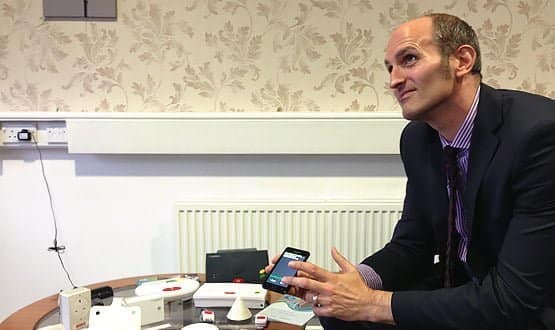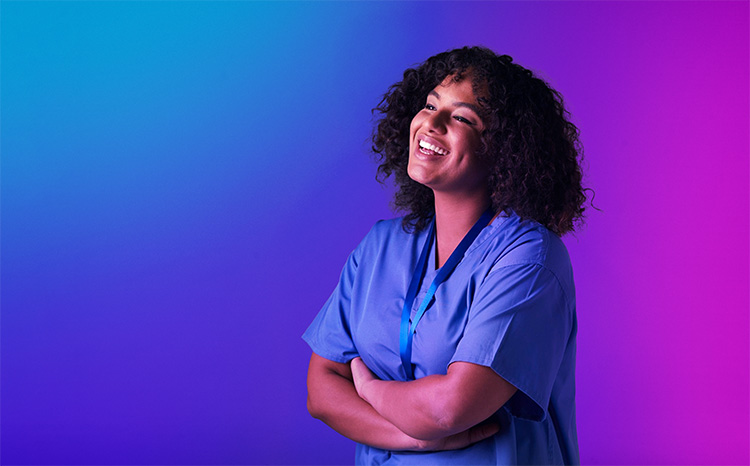Barn buster
- 22 October 2013

As our hire car winds through hedge-lined lanes further and further away from Newquay airport, it is hard to imagine that we are heading towards a hi-tech telehealth monitoring centre.
Fortunately, I’ve been warned that BT’s Cornwall operation is based in a former barn; although, when we finally get there, it appears to be a comfortable set-up with not a hay bale in sight.
Underneath the heavy, wooden cross beams, at least four nurses monitor nearly 1,200 telehealth patients. At the same time, a team of non-clinical patient support operators deal with other issues, such as problems with the kit.
This team also deals with ‘out-of-parameter’ alerts on a daily basis by contacting patients and notifying the nurses if a patient is consistently returning ‘red’ readings.
Still, the workers won’t be in a barn much longer. Having won the Cornwall telehealth contract this month, BT is moving them to join its telecare team near Truro, which already supports 11,000 users. The company believes this will be the first example of the two services being combined under one offering and that it will set it apart from other providers.
Moving on from WSD
Dave Tyas, subject matter expect for telehealth, originally worked for NHS Cornwall and Isles of Scilly primary care trust, when it was involved in the Whole Systems Demonstrator programme.
This was billed as the biggest randomised control trial of telehealth and telecare in the world; although it explicitly set out to provide “robust evidence” for investment in these technologies, as well as advice on how to make them work in the ‘real world.’
Three pilot sites were set-up in June 2009 to assess the benefits and impacts of telehealth and telecare technology on the NHS, social care services, patients and carers, but the results have been decidedly mixed.
The headline findings on the WSD trial, released in December 2011 to support the launch of the government’s 3millionlives campaign to kick-start the industry, claimed that "correct use" of telehealth could deliver reductions in A&E visits, emergency admissions and mortality rates.
However, further reports on the programme have found that telehealth is not cost effective; and does not even improve quality of life. This seems to have curbed other large projects; while 3millionlives is struggling to recruit patients to its pathfinders. Yet, in Cornwall, the use of telehealth is growing rapidly.
Rapid expansion
Tyas has run the Cornwall service for the past four to five years; staying with it when it moved from being a WSD pilot site to a mainstream service in April 2010.
As a WSD pilot, the area had 500 patients, but over the past two and a half years this has grown to nearly 1,200. Over the past 12-months alone, there have been more than 500 telehealth installations.
“We work with all our different commissioning organisations and providers and receive referrals from any clinician in the county as long as it meets protocols and criteria. We also work with the acute consultants and GPs to understand what those protocols should be,” Tyas explains.
The service is now in the enviable position of being approached by clinicians about exploring the use of telehealth to support new groups of patients.
It has expanded from providing the service for COPD, heart failure and diabetes sufferers, to include monitoring of patients’ blood pressure as part of falls prevention and urinary tract infections.
Asked why Cornwall appears to have succeeded where the other sites failed – at least to come up with the evidence based promised – he says it was the only one of the three WSD sites that was NHS-led.
Telehealth therefore became embedded in the working of the PCT, and was supported by providers in the area, he suggests.
GPs tend to be the most sceptical about the benefits of telehealth and are especially concerned about its potential to increase demand for health services if not managed correctly.
Tyas says his team works hard on local engagement and Cornwall GPs are clearly convinced of the benefits of the programme, as all 69 in the area have now referred a patient to the service.
Neighbouring areas are watching closely how the Cornwall service develops, and Somerset has recently started using it for UTI patients.
Making it personal
Tracey Hitchens, clinical operations manager, believes a key component of her service’s success is that it is tailored to each patient. For example, those being monitored for UTI are asked about their state of health before they got an infection, and these questions are programmed into their home unit to answer every day.
Patients answer the questions and, if the system indicates they are at risk, they test their urine at home. In some cases, patients will already have antibiotics at home that they can start taking if the test is positive.
“This is what really transfers into the BT offering moving forward, the personalised approach, understanding what relates to that specific patient,” Hitchens argues.
Cornwall spends about £1m a year treating UTIs. From a cohort of 46 patients over a 12-month period, the number of hospital admissions for UTIs decreased from 23 to two in the year that it started using the telehealth service. One hundred patients are now on the scheme.
Cornwall is already doing an internal evaluation of the telehealth service and is looking at external evaluation. “WSD was quite a long time ago; what we want to do is get an independent academic evaluation of the service and we’re just starting those discussions,” Tyas says.
Telehealth as a business
Another trip down winding roads takes us to BT’s demo suite in Truro and Penwith College, where business development director Julian Kelly shows us Alfi – Assisted Living For Independence.
This includes telehealth, telecare, telecoaching and teleconsultation; essentially the whole package that sits around using technology to support people.
“We have got at least 30 interested parties currently talking to us about telehealth and telecare and a number of them have come down to see us,” Kelly says.
The majority of interest is from local councils and clinical commissioning groups, as well as frameworks involving a number of organisations working together. Kelly explains that while the call centre may be based in Cornwall, the service will always provide local installers.
A range of devices are on display, from blood pressure monitors to scales, which are linked via Bluetooth to a Samsung phone to relay the information to the monitoring centre. Patients do not enter their own results, but can see them and have a record of them on the phone to show to their clinician, if they choose.
The mobility of today’s devices means people can even take them away on holiday and still submit readings.
Patients spend on average 230 days in the telehealth service. Although some are only with it for a couple of weeks, others have been using it since the WSD trial more than four years ago.
Is telehealth really the future?
A patient survey completed in Cornwall last year showed that 93% of patients felt they were getting a benefit from the telehealth service, by making their trips to the GP more appropriate or reducing their need to be seen by a clinician.
Tyas says: “We recognise the issues around cost effectiveness that was part of WSD, but its four years on and the market has changed. Technology has advanced incredibly, and we are looking to provide a service that offers value for money and return on investment, that’s got to be our goal.”





